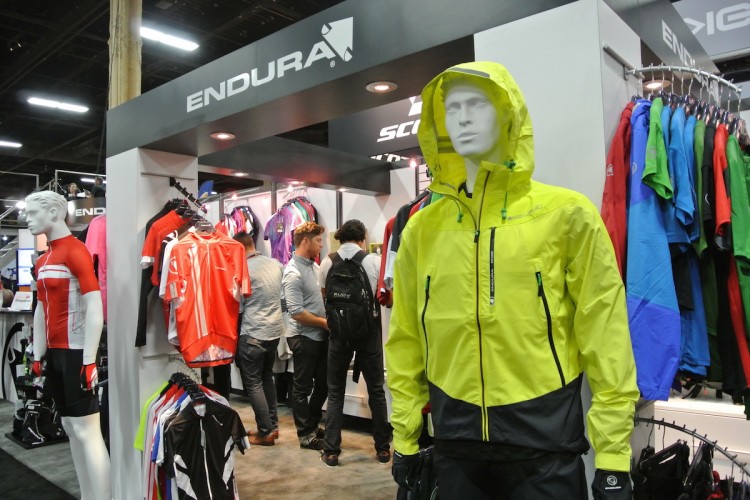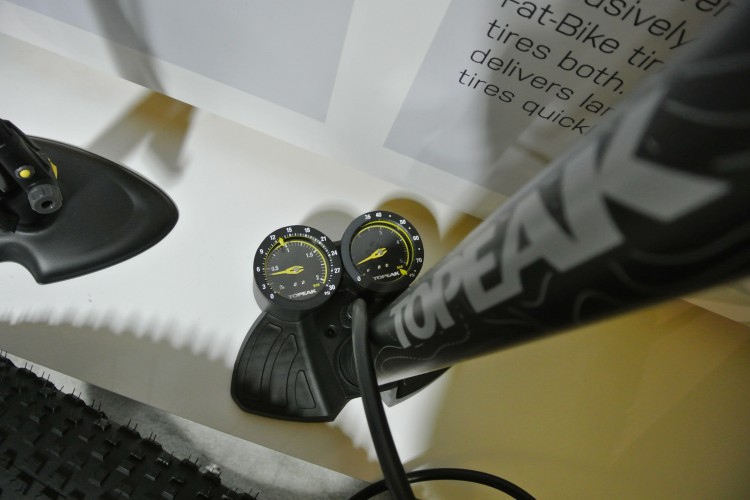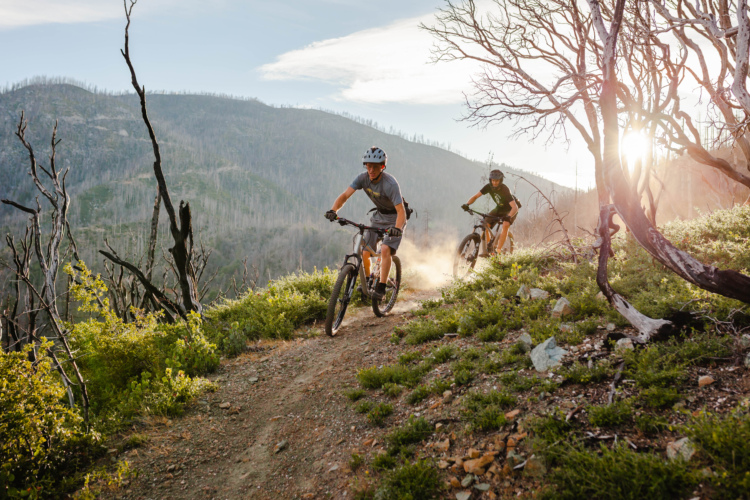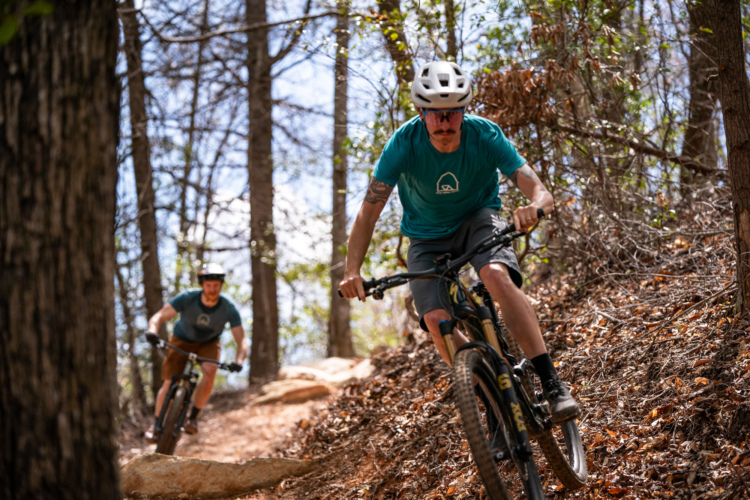
Demo days provide a perfect opportunity to properly try a mountain bike before you buy. Here you can test the fit, feel, and handling of a new bike, off road on actual trails rather than just ’round the car park of your local bike shop. For direct sale brands this is their version of a shop window, giving customers a chance for a proper inspection of the bike in the flesh. It’s certainly better than accosting the next poor guy to ride by on the bike you’re interested in!

Demo days are most often held by the brand themselves, though sometimes shops will run their own as a way to promote the latest releases. Other times, a bigger event, like Sea Otter or Outerbike, will provide the opportunity to test bikes from multiple brands.
[see_also id=”58004″][/see_also]
There will be a range of models and sizes on offer, though if you wish to test a specific bike it would be wise to call and book yourself a slot in advance. Charges vary from around £100/$130 at popular bike park venues where you can test multiple brands in a day, to often only requiring a refundable deposit at smaller, singular brand-run days.
You probably already have a few choices of bike in mind; if so, the easiest way to find a demo day is to search through the brand’s own website or Facebook page. Be sure to look into the venue beforehand to be sure it has similar trails and terrain to what you would normally ride, if possible.

So with bike choice narrowed down, correct sizes located, appropriate venue picked, it’s time to get testing.
To try to limit patronizing advice that mostly comes down to common sense, or over technical magazine testing level of geek talk that wouldn’t appeal to half the readers here, I have stuck to a brief 10 pointers. These should get you off to a good start, ensuring you get the best impression of each bike possible before you make a decision.
What should I do?
1. Get the bike set up correctly

It doesn’t matter if you’re testing multiple bikes in a morning and only planning to ride for 30 minutes on each, it is impossible to get a true feel for a bike without putting a little bit of time and effort into the set up. The demo mechanic should be able to assist you with this as someone who understands the bike well. Set up includes: adjusting the suspension for your weight; the saddle to your height; fitting your own pedals; adjusting the brakes to your preferred angle, distance from grips, and bite point. Ask the mechanic to show you how to adjust the rebound yourself so you can play with this during the ride if need be.
2. What to ride
To begin, stick to an easy blue-graded flowing trail so you can devote your whole attention to how the bike feels, depending on what you usually ride, of course. Make sure this includes a bit of climbing. Try a sprint to check the power efficiency, and seek out a technical climb to push the bike’s traction. Once you’ve got a feel for the bike, step it up to more of your usual technicality. Whilst you want to test the bike a bit and see how comfortable and confident you feel on the harder stuff, try to avoid taking unnecessary risks. No matter how great the bike feels, it’s not yours and you’re not used to it.
3. Be open minded
Try not to limit yourself to any preconceived opinions that are, in all likelihood, based on other people’s opinions and a set of figures. Allow yourself to go with the flow of the day–if something feels good stick to it, if it doesn’t, don’t be afraid to try a size/model you hadn’t expected. Don’t be limited by sticking with what you normally ride or what other people say you should. Trust your own judgement as to what feels good, and experiment.
What to Think About
4. Does this bike fit me?
Can you comfortably reach the bars? When standing, can you move around, hanging out all sides easily without the saddle obstructing you even when fully dropped? Are you having to constantly wriggle to the front of the saddle when climbing? Can you breathe easily when sitting down to sprint? Are there any aches and pains already when you finish your ride?

5. How does the ride feel?
This can be thought of in two parts. How well the bike handles and copes with the varying types of terrain you can find, e.g, climbing, flowy sections, roots, rocks, cornering, steep descents/climbs. Equally important, irrelevant of how good the bike may be, is how comfortable and confident the bike makes you feel. It can be the best-performing bike out there but if it the position it sits you in isn’t right for you, it’s a no go. Every bike has a character in the way it handles–you have to find the one that makes you smile the most.
Be sure to consider basic bike fitting principles, and bear in mind that you won’t be able to get every test bike professionally fit before you ride it.
[see_also id=”30732″][/see_also]
6. Don’t get star struck

While much can be said for following a good gut feeling, it can be easy to get caught up in the excitement of a demo day. It might be your first ride on a bike of this calibre, the trails might be dry and perfect, it might be a new venue to you with the best trails you’ve ever ridden. It might be the most rad-looking bike in the place with your exact favourite colour scheme. None of this makes a good reason to buy, even if the clever salesman makes you a tempting day-of sales offer. It’s important to keep a calm head and give yourself time to make a rational, careful decision.
What to Ask
7. Explain what you are looking for
Though you will, rightly so, have a preconceived idea of what you want, particularly at a multi-brand demo day, it is worth making use of the dealer reps’ in-brand knowledge. Explain to them honestly what you are looking for, including the types of your trail you ride, your skill level, and future ambitions.
Georgia Leslie from Specialized shares her top advice:
“Many of us have a bike in mind that we are lusting after, but it may well not be the best bike for the terrain you ride or your style of riding. Wheel size options and small differences in travel can transform someone’s perception of a bike, regardless of the intended application. With this in mind, talk to our staff who can give first-hand advice on which model would be a good starting point. From here you can try different models in order to give you a better feel and understanding of the intricacies of the different platforms before making an assessment on what works for you. As an example, a long travel 29er enduro bike might feel fantastic on steep, technical descents, but if this kind of riding rarely falls into your regularly routes then something more within the trail stable might be more suited. Either way, come with an open mind and be assured that our demo team have a wealth of personal experience that is really invaluable.”
8. Get all the details
Don’t be afraid to quiz the organizers to be sure you understand exactly what you are getting for your money. Compare the spec of the different builds at each price point, from entry to race team. Ask what differences there are from the previous year to the current one and if there is a new model in the pipeline. Find out what colours are available and if there would be any flexibility in the finishing kit, particularly if it’s a direct sale brand.
9. What’s the deal?

If you find yourself genuinely interested in a bike, don’t be afraid to find out what’s the most you can get for your money. Ask if there are any special day deals. Do they offer financing? If you are at a brand-specific day, find out which LBS stocks these bikes; enquire about what would be any potential benefits between buying direct or through them. What are the wait times for shipping? Local bike shops can often offer attractive deals in terms of after purchase care, including free servicing, reduced labor charges, and deals on any kit you need to buy to go with it. If you’re feeling really strapped for cash, ask when the ex-demos will need to be replaced, as they often go at a cracking price if you don’t mind a few scratches!
10. Play the field
There are many, many demo days out there so don’t feel like you have to make a decision off the first one you attend. Some may require a little traveling, but why not make it into a fun weekend away? Who doesn’t love trying rad new bikes in new places? Don’t be afraid to ask in your local bike shops–they might not have it well advertised, but many will have demo versions of their shop front bikes that you can borrow for a day/weekend, providing you leave a large deposit.
Conclusion

Buying a new bike is an exciting and enjoyable experience but it can also be hugely mind boggling and stressful. There are so many impressively-capable bikes out there, it’s easy to feel overwhelmed by trying to make a decision. Demo days are a great way to cut through all the sales talk, myriad of opinions, and stop drowning in numbers to just let the ride itself do the talking. When you find a bike that ticks all the boxes, proving right for exactly what YOU want it do, you will know it’s the one.
It will be the bike you can’t wipe the grin off your face while you’re riding.



















0 Comments